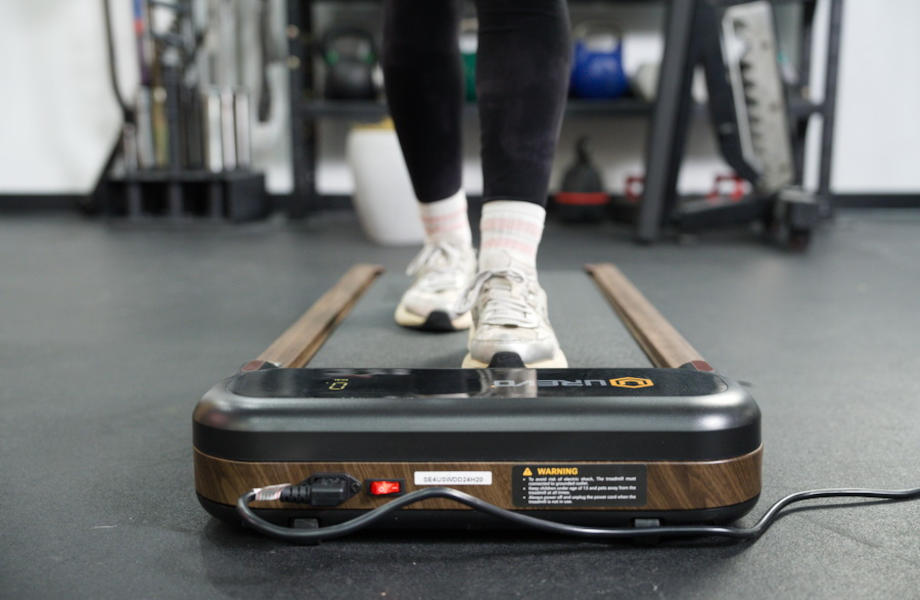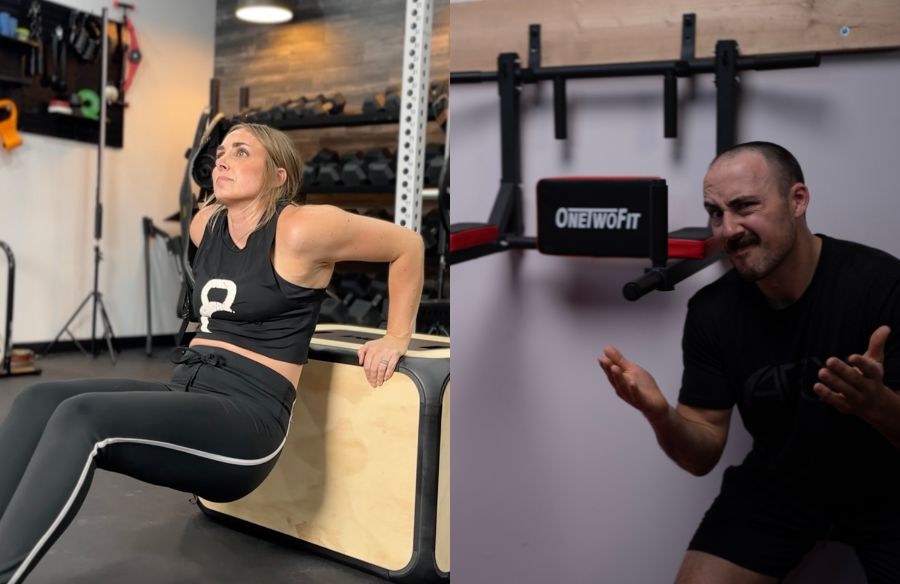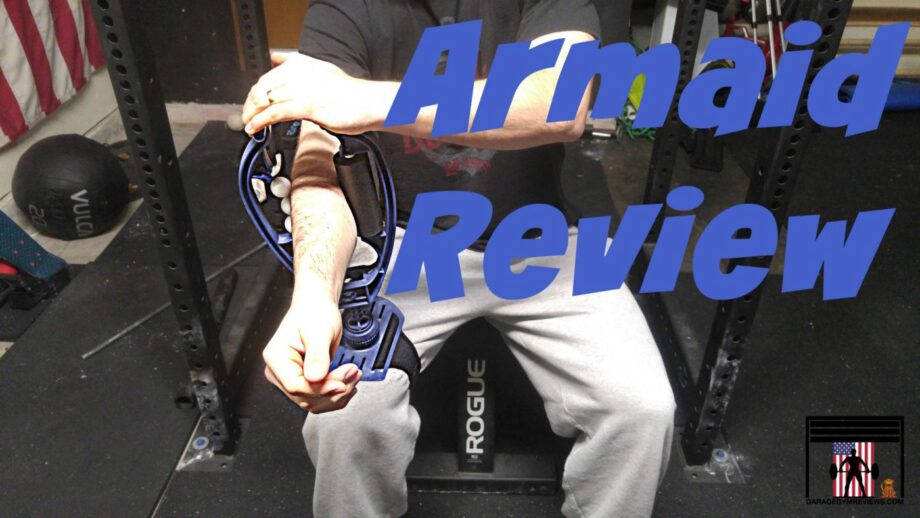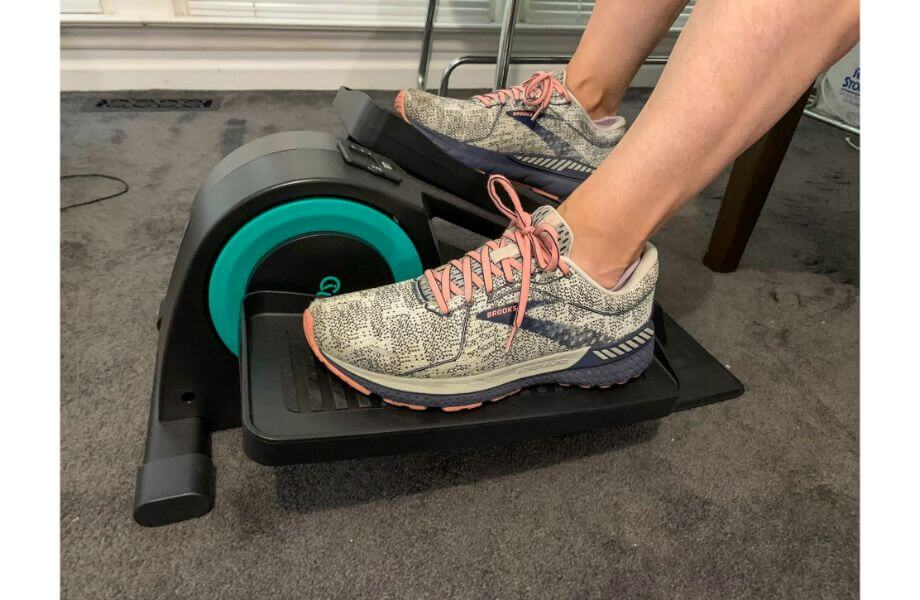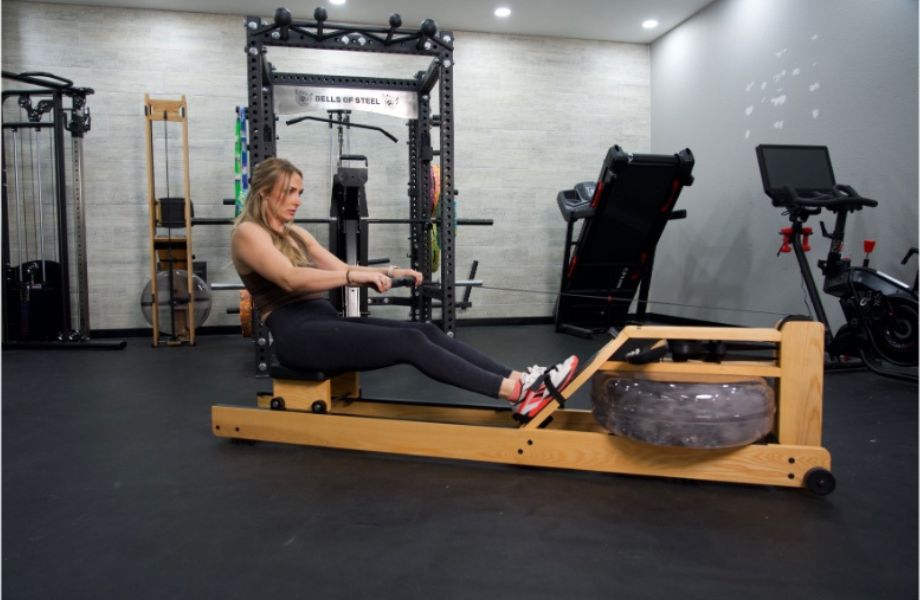Whether you want to lose weight, improve your heart health, or simply escape the day’s chaos, walking on a treadmill can be a great addition to your workout routine. Treadmill walking offers several benefits to your overall wellness, but you might wonder, “How long should I walk on a treadmill to maximize those benefits?”
The answer really depends on your goals and fitness level. Walking on a treadmill can serve different purposes, but not all workouts are built the same. Treadmill walking can come in the form of steady-state cardio, incline work, or even high-intensity interval training. No matter your preferences, there are a host of benefits of walking on a treadmill that can help you become a fitter, more confident version of yourself.
You know we talk the talk, but we also walk the walk, so in this article—with an assist from Kate Meier, NASM-CPT, USAW-L1, CF-L1—we’ll cut straight to the chase and let you know how long you should walk on a treadmill.
Benefits of Treadmill Walking
Treadmill workouts are a reliable way to work on your cardiovascular fitness—no matter the weather or your schedule—and they make it easy to control your pace, incline, and effort. Beyond improving your endurance and heart health, regular treadmill sessions can also support better mood, provide stress relief, and boost overall mental well-being.
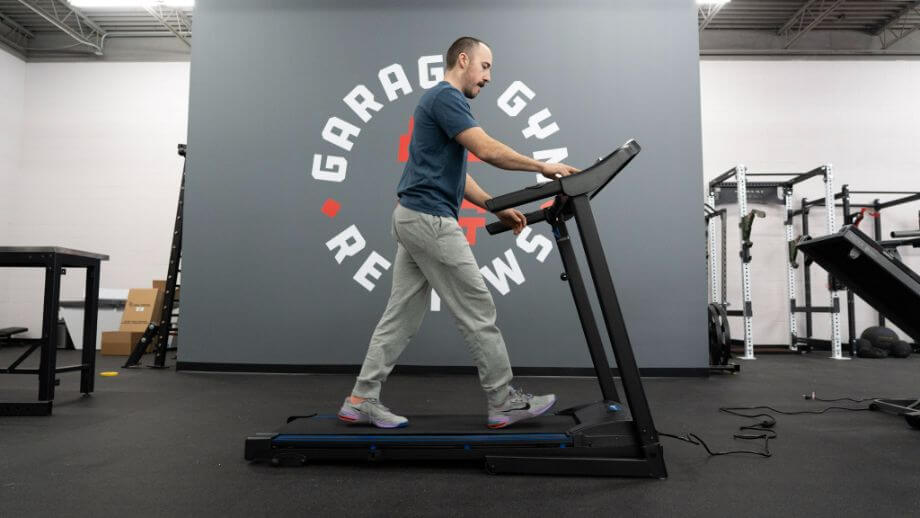
Treadmill walking can help with:
- Weight maintenance: While nutrition plays an integral role in weight loss goals, aerobic exercise like walking can also help support your progress.
- Heart disease prevention: According to a 2010 meta-analysis in the journal Current Opinion in Cardiology1, walking has the potential to play an integral part in the prevention of cardiovascular disease through improving blood pressure and cholesterol, as well as promoting better body composition.
- Mental well-being: Aerobic exercise has also been shown to improve mental health markers. If you’re a practitioner of the “Hot Girl Walk” TikTok trend, you know this to be true.
Essentially, if you name the health benefit, treadmill walking can most likely help you achieve it. Walking on the treadmill can help people of all fitness backgrounds reach their goals.
RELATED: Is Walking The Best Cardio?
Types of Treadmill Walking Workouts
The cool thing about the best treadmills? That one piece of equipment can get your heart rate going in more ways than one. If someone tells you they get bored on a treadmill, they may need to switch things up!
Treadmills can accommodate all kinds of workouts, including steady-state, incline, and HIIT workouts. You might have a favorite type of treadmill workout, but each can play a role in a balanced exercise routine. We asked Kate Meier, NASM-CPT, USAW-L1, CF-L1, to help us break down each category, so let’s check them out.
Steady-State Workouts
If physical activity is new to your lifestyle, a steady-state walking workout might be a great place to start. It can help support weight loss efforts, increase endurance, and even improve your mood. While it’s not as low-impact as, say, working out on an exercise bike, walking can be fairly joint-friendly, particularly in comparison to higher-intensity running or jogging.
If you need to clear your mind, steady-state training is a good option, too. It doesn’t take much brain power, and, according to a 2006 study in The Primary Care Companion to The Journal of Clinical Psychiatry2, aerobic exercise like walking has been proven to reduce the symptoms of mental health conditions like anxiety and depression. Just hop on the treadmill, set your speed, and get to stepping. You’ll likely leave the gym in a better mood than when you came in.
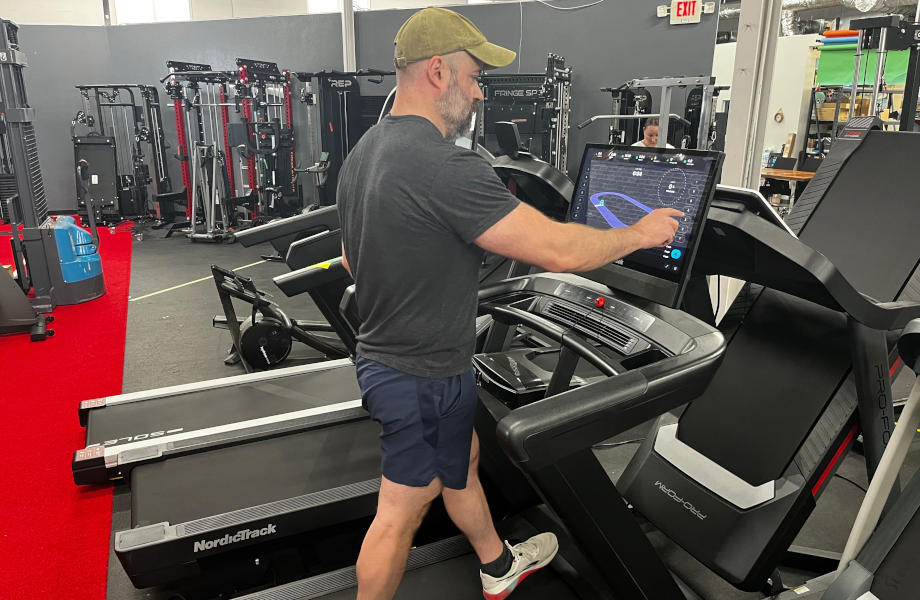
- Type of exercise: Steady-state cardio is simply a workout requiring continuous, steady effort. Once you reach your target speed or heart rate, you stay there for the duration of your workout.
- Intensity: Steady-state cardio is a lower-intensity form of exercise.
- Duration: Move at a consistent pace that will last anywhere from around 15 to 20 minutes for beginners and significantly longer for more experienced endurance athletes.
- Frequency: How often you engage in steady-state cardio depends on your fitness level and goals. Many people can do steady-state cardio workouts, like walking, every day without any repercussions. If you’re just starting with steady-state cardio, try two to three workout sessions per week before increasing the frequency.
RELATED: Steady-State Cardio Vs HIIT
Incline Workouts
Using the incline function of your treadmill, you can take the once-flat treadmill deck up to new pitches, simulating your favorite real-world hills and climbs. Some people prefer to set the incline (plus speed) and walk until the timer goes off, like the trendy social media “12-3-30 workout.” Others can prefer to create the illusion of rolling hills by increasing and decreasing the incline for set intervals. No matter your preference, incline workouts are an effective way to boost your fitness level. They can help improve your cardiovascular health, build endurance and stamina, burn calories, and improve your musculoskeletal health.
Walking at an incline activates all the same muscle groups as walking on flat terrain with emphasis on your lower posterior muscles. Plus, because of the approach angle, your calves, hamstrings, and glutes will all feel an extra burn compared to walking at a level foundation.
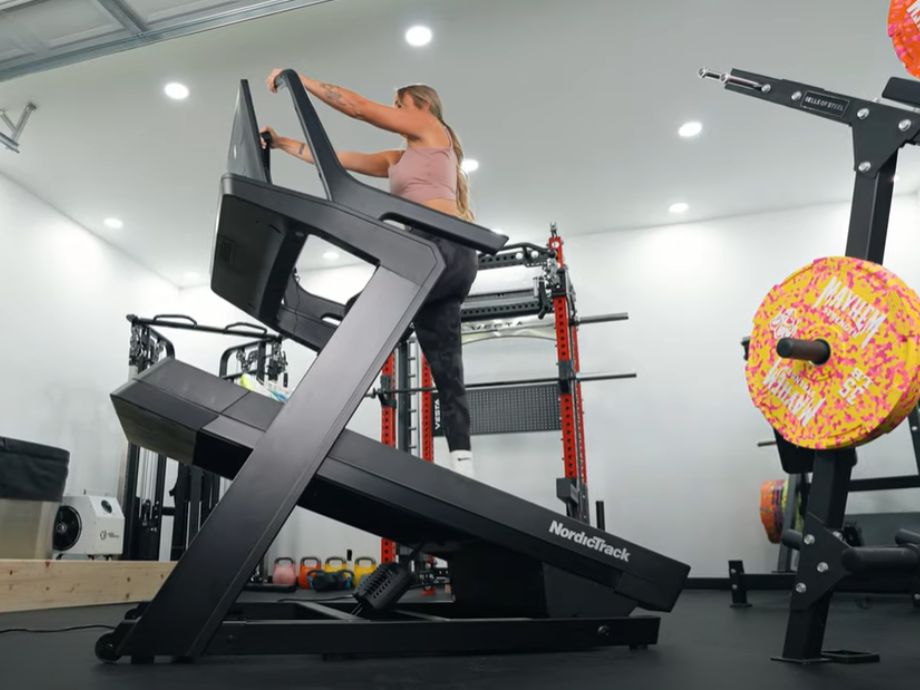
- Type of exercise: Incline workouts are a type of cardio that targets your lower-body muscles (hello glutes and quads!). Incline training can increase your heart rate even though your pace remains the same.
- Intensity: Incline workouts are fantastic for kicking your typical steady-state cardio up a notch on the intensity factor.
- Duration: If you’re new to incline walking, keep the duration you spend going uphill shorter, at first. You can start with alternating a minute of incline walking with a minute of flat walking, and gradually increase the time you spend walking uphill while keeping the flat walking the same. Eventually, you can walk at an incline for 20 minutes or longer.
- Frequency: Incline workouts are still low-impact enough that you can do them multiple times weekly. Beginners may start with just two days and work up to five or more incline workouts each week.
RELATED: Best Incline Treadmills
Interval Workouts
Much like high-intensity interval training (HIIT), interval workouts are known for their efficient, calorie-burning structure. They alternate short bursts of higher-intensity effort with lower-intensity recovery periods, helping you get many of the same benefits as longer steady-state sessions in less time. If you’re on a tight schedule, an interval walking workout can be an easy, effective way to fit in quality cardio without spending hours on the treadmill.
You can incorporate treadmill walking into a variety of different HIIT workouts. For example, you might choose to walk between sets of treadmill sprints, incline runs, or even between dumbbell work off the treadmill. If you’re a beginner, you could alternate between faster and slower intervals of walking for a nice introduction to interval training.
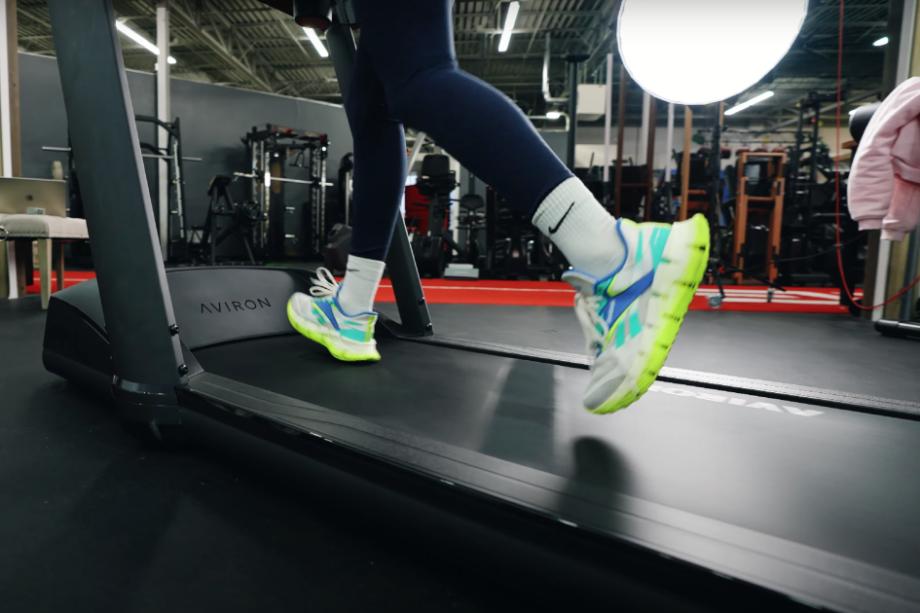
- Type of exercise: Interval workouts, by definition, are workouts that include set circuits of work and rest.
- Intensity: While you can make these sessions as “easy” as you want, the most effective interval workouts demand that the “work” periods are intense. This makes them some of the highest-intensity cardio workouts you can do, with the goal of elevating your heart rate to near-maximal levels for a short period, building in rest sessions to allow your heart rate to come down, and repeating until the entire workout is complete.
- Duration: Due to their intense nature, interval workouts typically do not last as long as steady-state cardio workouts. You can complete an effective workout in just 10 minutes doing intervals, as long as you are pushing the “work” section. For example, if you do four 200-meter sprints with a minute of rest in-between, your total workout time could be less than 10 minutes.
- Frequency: Keep high-intensity interval workouts to just one or two days a week, especially if you’re hitting near-maximal heart rate levels.
RELATED: Treadmill Interval Training Workouts
Treadmill Workouts By Goal
How long you should walk on a treadmill depends on what you’re trying to accomplish. Are you trying to build endurance? Are you focused on losing weight? On a time crunch and need an efficient way to get your cardio in? Follow these goal-based guidelines to align your workout time (and intensity) to the results you want.
Endurance
If your goal is to improve your cardiovascular endurance, prioritize longer, steady walks at an easy-to-moderate intensity. Start with 30-minute sessions, staying at a pace where you can still talk in full sentences without gasping for air. Over time, you can progress by adding 5 to 10 minutes per week, or sprinkling in a few short incline segments to keep your heart rate up.
RELATED: Stamina Vs Endurance
General Health
For general health, consistency matters more than intensity. A good starting point is 20 to 40 minutes of walking at an easy-to-moderate pace most days of the week. You can also split it up for some added variety. For instance, try taking a 10- to 20-minute walk after your meals, which can also aid with digestion.
Weight Management
If you want to primarily focus on treadmill walking workouts for weight loss, you can go in two effective directions:
- Moderate-paced, steady walking for longer total time
- Intervals or incline walks for higher effort in less time
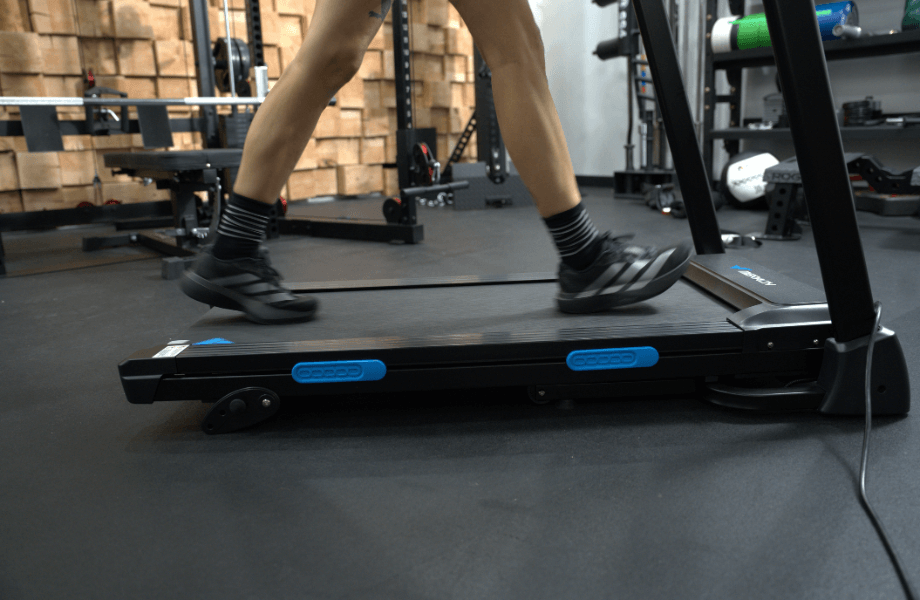
A useful range is 30 to 60 minutes per session, four to six days per week, depending on your current activity level and recovery needs. If you’re short on time, an incline or interval walk can deliver better “bang for your buck.” Ultimately, utilizing both steady-state and HIIT workouts can prevent boredom and allow you to enjoy the unique benefits of both forms of cardio.
Recovery and Rehabilitation
If you’re using treadmill walking as a form of recovery from tough training days or injury rehabilitation (as recommended by your doctor), take a “less is more” approach in terms of time and intensity. Think 10 to 30 minutes at an easy pace, minimal to no incline, and no “pushing through” the pain. This isn’t a time to empty the tank and put more unnecessary stress on your body.
Busy Schedule
When life gets hectic, your goal should be to sustain healthy habits—not abandon them. Even a 15-minute workout can be worthwhile, especially if you walk briskly or add a small incline. If you can manage it, a quick treadmill walk after meals is another easy way to inch closer to your daily step goal.
RELATED: Best Treadmill Workouts For All Fitness Levels
How Long Should I Walk?
So, you’re ready to hit the treadmill, but you’re wondering, what’s the optimal amount of time to spend walking? The answer to that question will vary based on your fitness goals. Are you walking to lose weight? To improve your overall health? To clear your mind? The purpose behind your walking can help you figure out how many minutes to spend on the treadmill.
The CDC recommends3 that the average adult gets 150 minutes of moderate-intensity exercise weekly. That’s approximately 30 minutes, five days per week. 2018 research from the journal Obesity4 demonstrated that 35 minutes of walking can help promote weight loss, specifically when divided into bouts of at least 10 minutes of moderate-intensity effort.
A 30-minute treadmill workout at a steady pace can be a great place to start when it comes to treadmill walking for weight loss, better physical health, and improved mental health. A lot of good can happen in 30 minutes. If you’re completing an interval workout, you could aim for just 15 or 20 minutes, depending on the intensity.
As your strength and endurance improve, you can increase the duration of your workout, or consider implementing interval training. Whether it’s a steady-state walk, incline walk, or interval workout, increasing the challenge of your training by maintaining an elevated heart rate for an extended time can help bring you closer to your goals.
How Fast Should I Walk?
Do you have the need for speed? Increasing your pace can help you meet your goals, but you don’t have to sprint to the finish line for every workout. The goals you set for yourself can help you decide how fast you should push your pace. So, just how fast should you walk?
If you’re walking for overall wellness, a leisurely speed will do. You should be able to carry on a conversation with no trouble without breaking stride—for an average person, that would be about 3 MPH.
If you’re aiming for weight loss, a slight increase in pace can help promote calorie exertion. You should still be able to have a conversation, but your breathing may start to increase. For an average person, that would be about 3.5 MPH.
Lastly, if your main goal is to improve your aerobic fitness level, kick up the speed even more to just below a light jog.
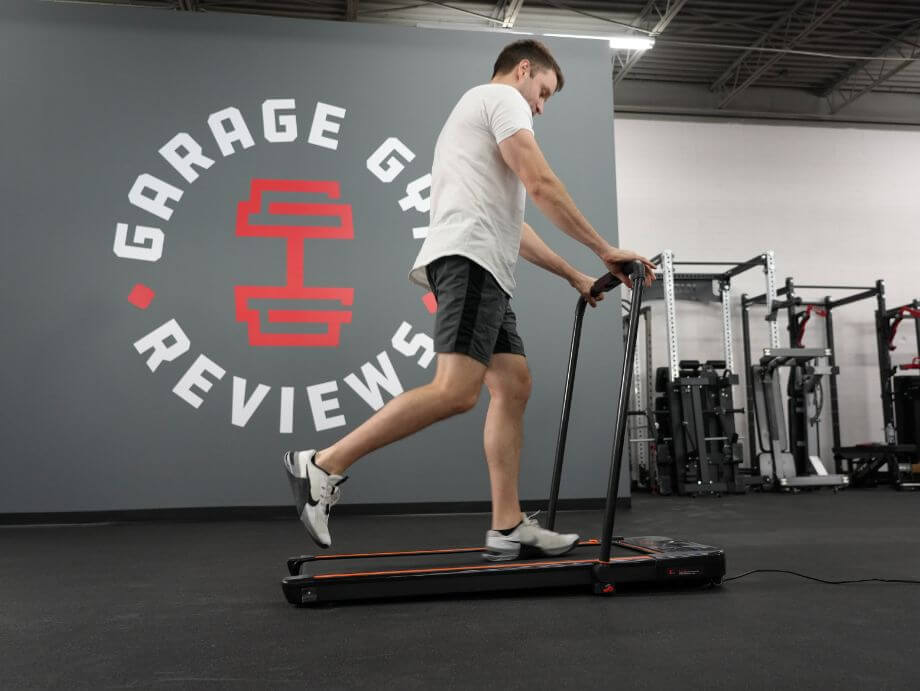
A certified personal trainer can be a great ally when trying to navigate training decisions to best reach your goals. They can help you develop your treadmill walking program and pair it with strength training workouts.
Expert Tip: You might be tempted to hold on to the handrails for extra stability as your speed increases, but taking your arm swing out of the equation goes against the natural walking form. Avoid holding on to the handrails and maintain good form when on the treadmill.
RELATED: Good Running Form for Beginners
Treadmill Training Frequency
Can you use a treadmill daily? The short answer is, yes. However, the key is to avoid turning every walk into a grind. Daily treadmill use works best when you alternate easy days (steady-state) with harder days (incline or intervals), and keep at least one or two sessions per week truly easy.
Here are a few weekly schedule options you can try as you build your own routine:
Option A: General Health (5 days/week)
- Monday: 25 to 35 minutes at an easy to moderate pace
- Tuesday: 25 to 35 minutes at an easy to moderate pace
- Wednesday: Rest OR 15 to 20 minutes at an easy pace
- Thursday: 25 to 35 minutes at an easy to moderate pace
- Friday: 25 to 35 minutes at an easy to moderate pace
- Saturday/Sunday: Rest OR optional longer walk (40 to 60 minutes)
Option B: Weight Management (6 days/week)
- Two days: 20 to 30 minutes of incline walking OR intervals
- Three days: 30 to 45 minutes at a steady walking pace
- One day: 20 to 30 minutes of a low-intensity recovery walk
- One day: Rest
Option C: Daily Treadmill Walking (7 days/week)
- Four to five days: 20 to 45 minutes of easy steady-state walking
- One to two days: 20 to 30 minutes of incline walking OR intervals
- One day: 10 to 20 minutes of a low-intensity recovery walk
RELATED: Incline Treadmill Workouts
Tips to Maximize Your Treadmill Workouts
No matter your goal, there are some key points to keep in mind whenever you step onto the running belt. Here are some beginner-friendly tips that can help make your treadmill training safe, efficient, and enjoyable.
- Perform a warm-up and cool-down: Start with 3 to 5 minutes at an easy pace to prepare your mind and body for the workout, and finish with another 3 to 5 minutes to help bring your heart rate down to normal levels post-training.
- Add incline strategically: A slight incline can increase the workout’s challenge without forcing you to change speeds. It can also help engage muscles differently, especially if you set the incline high.
- Maintain proper posture: Follow these cues—a tall, upright torso, relaxed shoulders, light grip, and eyes forward. Avoid bending over or hanging onto the handrails for too long, as this can encourage poor postural habits.
- Vary your workouts: Don’t get stuck doing the same steady-state walk every day if you’re in this for the long haul. Switch things up to keep your mind and body on their proverbial (and literal) toes.
- Don’t ignore your feet: Comfortable walking shoes—and dry socks—matter more than people think. Wear shoes that fit properly and feel good on long walks to help prevent blisters and other injuries.
Treadmill Walking Mistakes
As low-impact as treadmill walking can be, there is still room for mistakes, such as not varying your training enough to prevent boredom or not wearing the proper footwear. We’ve covered this topic in more detail in our guide to common treadmill mistakes and how to prevent them from derailing your cardio sessions.
Walking Away With a Few Final Thoughts
Treadmill walking can be a great way to log your cardio exercise and improve your overall health. Whether you want to burn fat, lose weight, build muscle, or improve your cardiovascular health, spending some time on the treadmill can bring you one step closer to achieving those goals. Below are a few final notes to keep in mind when looking to schedule some treadmill walking in your future:
- Beginners should try for approximately 30 minutes of walking at a moderate pace.
- You can increase the duration of your treadmill walking in 5-minute increments as you develop increased strength and endurance.
- Treadmill walking can be incorporated into your rest days for some low-impact, active recovery.
- Treadmill walking can also be a major component of interval training. You can incorporate brisk walking between rounds of incline or speed work, or spend 15 or 20 minutes doing walking intervals if you’re a beginner.
- If you aren’t sure where to start with your treadmill walking routine, consider working with a certified personal trainer to develop an individualized plan for your specific health and fitness goals.
How Long Should I Walk On A Treadmill? FAQs
How long should I walk on a treadmill to lose weight?
According to CDC guidelines2, the average adult needs at least 150 minutes of moderate-intensity activity per week. That averages out to approximately 30 minutes, five days per week. Such a schedule can play a significant role in your weight loss journey. However, when trying to lose body weight, it’s important to remember that a well-balanced diet and strength training can be important additions to walking on a treadmill.
How long should I walk on the treadmill to lose belly fat?
There is no way to burn fat in one specific area, but by walking on the treadmill consistently, you could see a reduction in overall body fat, resulting in reduced belly fat. Starting with the CDC’s recommendation of 150 minutes of moderate-intensity exercise per week could be an effective jumping off point for your weight loss journey.
Is walking on the treadmill 30 minutes a day enough?
According to Harvard Health5, a 150-pound person would burn about 130 calories walking at a 3.5 MPH pace for 30 minutes. Since there are approximately 3,500 calories in one pound, the calorie burn from those 30 minutes (without any calorie restriction or additional exercises) could help you lose one pound over the course of about one month.
How long should I walk on a treadmill just starting out?
If you’re just starting out, you might try walking for approximately 15 to 30 minutes per day at a moderate-intensity. As you get stronger and your fitness level improves, you can lengthen a couple of your sessions by 15 minutes. Eventually, you may find yourself walking at a brisk pace for a full 60 minutes.
What is a good speed to walk on a treadmill?
GGR Staff Writer and certified personal trainer (CPT) Lauren Strong says, “Like any form of exercise, you may need to ease in (or ramp up) to a speed walk. If you’re not accustomed to treadmill exercise, you may need to spend a few workouts (or a few weeks) at lower speeds like 2 or 2.5 MPH.”
“One of the main benefits from walking is the cardiovascular benefit,” Lauren continues. “With that in mind, if the speed you’re working with right now gets your heart pumping, that’s a good sign. You can take things a step further and use a heart rate monitor or fitness tracker to ensure you’re walking at a pace that meets your target heart rate.”
References
- Murtagh EM, Murphy MH, Boone-Heinonen J. Walking: the first steps in cardiovascular disease prevention. Curr Opin Cardiol. 2010 Sep;25(5):490-6. doi: 10.1097/HCO.0b013e32833ce972. PMID: 20625280; PMCID: PMC3098122.
- Sharma A, Madaan V, Petty FD. Exercise for mental health. Prim Care Companion J Clin Psychiatry. 2006;8(2):106. doi: 10.4088/pcc.v08n0208a. PMID: 16862239; PMCID: PMC1470658.
- How much physical activity do adults need. Center for Disease Control. June 2, 2023.
- Creasy SA, Lang W, Tate DF, Davis KK, Jakicic JM. Pattern of Daily Steps is Associated with Weight Loss: Secondary Analysis from the Step-Up Randomized Trial. Obesity (Silver Spring). 2018 Jun;26(6):977-984. doi: 10.1002/oby.22171. Epub 2018 Apr 6. PMID: 29633583; PMCID: PMC5970037.
- Calories burned in 30 minutes for people of three different weights. Harvard Health Publishing, Harvard Medical School. March 8, 2021.





